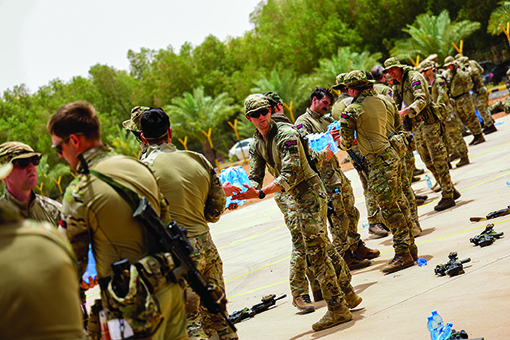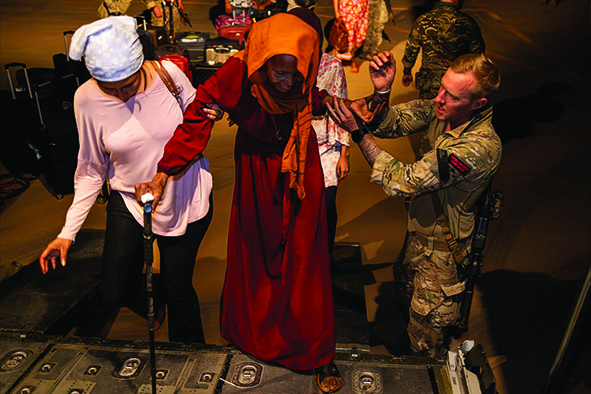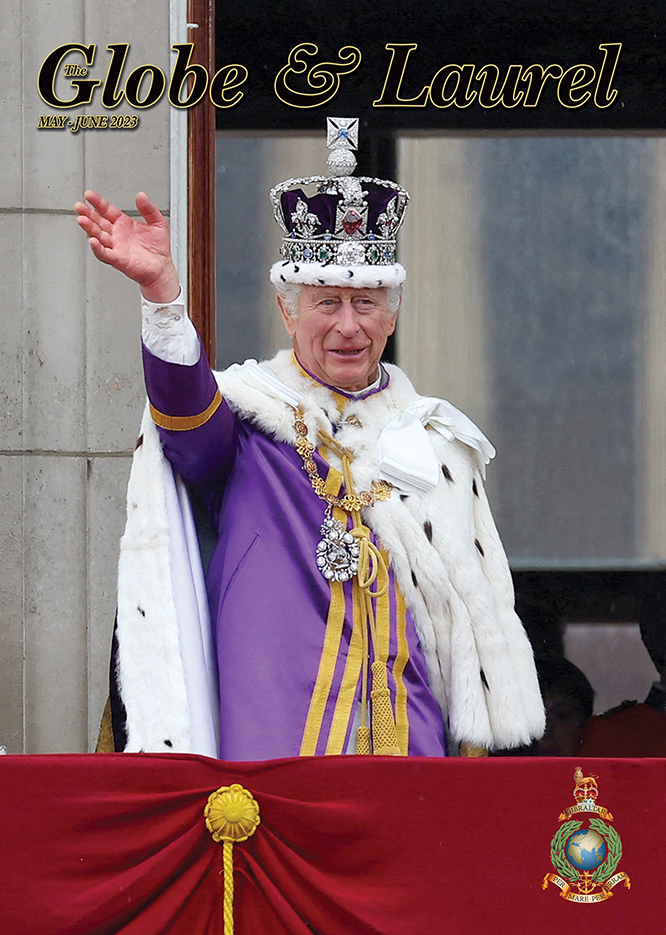The following article is taken from the latest issue of the Globe & Laurel magazine.
Click the button below to discover more.

By Sgt Sidwell, Media Ops SNCO
The Combat Camera Team (CCT) from 30 Cdo IX Gp RM, deployed alongside other elements of the 3 Cdo Bde RM to capture and record the successful evacuation of Eligible Persons from Sudan.
Within 18 hours of getting ‘the call’ our three-strong team landed in Cyprus, to join B Coy 40 Cdo. We had been deemed by Joint Forces Headquarters (JFHQ) as a priority to capture the first and subsequent stages of Op Polarbear. Running through RAF Brize Norton and onto our aircraft, kindly helped by JFHQ to get us through at speed, the CCT made it onto the aircraft. Destination, RAF Akrotiri and subsequently Sudan.
After landing, we linked-up with the 40 Cdo RM team. B Coy welcomed us with open arms, accommodating and accounting for all our needs. Ranks at all levels, including the CO, approached the CCT and explained how important our contribution would be. This gave the team and I a huge confidence boost; enabling the team freedom of movement and giving the photographers opportunities to capture the great content needed to support the operation.

Shortly after arriving, the RAF Media Operations Team from 83 AEG was introduced to us by Flt Lt Langan. At first (like most teams) there was a sense of competition however, once a less formal introduction had been made, it was clear to see we all had the same ethos to work as hard and as long as it takes to get the job done. The support 83 AEG offered us from start to finish was extraordinary. I have no doubt that without their efforts we would not have achieved such great results. Working with Flt Lt Langan and Sqn Ldr Bagshaw, seeing how they operate with such professionalism, has certainly developed my own ability and understanding of media operations.
On completion of battle preparation, we all felt some uncertainty. Would the Operation take place and what was going to be our role within it? After a few false starts, we finally got the go ahead. After the delivery of one of the best set of orders I’ve seen given by both the OC B Coy and the CO, the CCT split. PO Hoare attached to B Coy was to deploy into Wadi Seidna, shortly after LH Johnson alongside Sqn Ldr Bagshaw was attached to 83 AEG and deployed to Port Sudan. I remained in Akrotiri, linking in and supporting JFHQ, 83 AEG, 30 Cdo IX Gp and the CCT on the ground in Sudan.
Sqn Ldr Bagshaw has written her own account of her time in Port Sudan. In her article she concluded by saying: ‘There is an overwhelming sense of pride in the work done by everyone on the ground, particularly in the agility and interoperability of the military in all the supporting activities which enabled this operation. The Royal Navy repositioned geographically and provided service from counter-narcotics to humanitarian aid, the Army deployed directly from an exercise to a war zone, and the Royal Air Force provided intelligence and the heavy lift to move people and equipment around the globe in an instant. Maybe the most remarkable part is that this is business as usual for the military, the operation ended, personnel returned home, and their day jobs continued’.
Within eight hours of landing in Sudan the first images, videos and reports had been sent back. The men and women of the Bde had secured the area, built a base of operations, and started to process British Nationals. 83 AEG along with myself, headed to Larnaca Airport to capture the first landing of Eligible Persons (EP). I can still remember the feeling I had after seeing the faces of our first rescued British Nationals. That of pride and happiness. To see a child’s expression slowly change from shock into happiness and giving off a sense of pure relief that they were safe, is a memory I will keep forever.

Moments that stand out for the CCT include: a Royal Marine running at full pelt to get medical assistance for a collapsed civilian whilst an oppo cried ‘he never runs’; a young soldier looking after an infant who had no one else and would cry as soon as someone else tried to pick her up, so the soldier travelled back to the UK with her; and a soldier from the Duke of Lancaster’s Regiment entertaining queues of evacuees in the heat. These small acts showed we were in control and helped to calm the crowds.
Over the following weeks our Forces worked tirelessly, together and without fault. The Rapid Extraction Task Force, still in the same uniform they deployed in, were now feeling the effects of the relentless 45-degree heat. Back in RAF Akrotiri, I would see members from the RAF, Army and Navy walk around in an almost zombie like state, me included. However, not a complaint was heard, we all knew the job at hand was saving lives.
With the support of the Duke of Lancaster’s Regiment, RAF Regiment and many other attached ranks, the last EP flight to Larnaca Airport took off from Wadi Seidna. With over 2450 EPs returned safely, it’s safe to say it was mission success.
Throughout Op Polarbear, the CCT were there to capture and document this historic event. The photographs and videos taken by the team’s photographers were used around the world and made the front covers of several magazines and national newspapers and were widely used across social media platforms. The CCT captured the Bde demonstrating that we are able to undertake any task asked of us by the Government.
LH Johnson said: ‘As a photographer, you need to be part of every aspect of an event to tell the whole story. In doing so you get to see the huge team effort required to make an operation such as this a success.’
Read more from the Journal of the Royal Marines
For more information, and to read similar stories, visit: Globe & Laurel – RMA – The Royal Marines Charity (rma-trmc.org)
